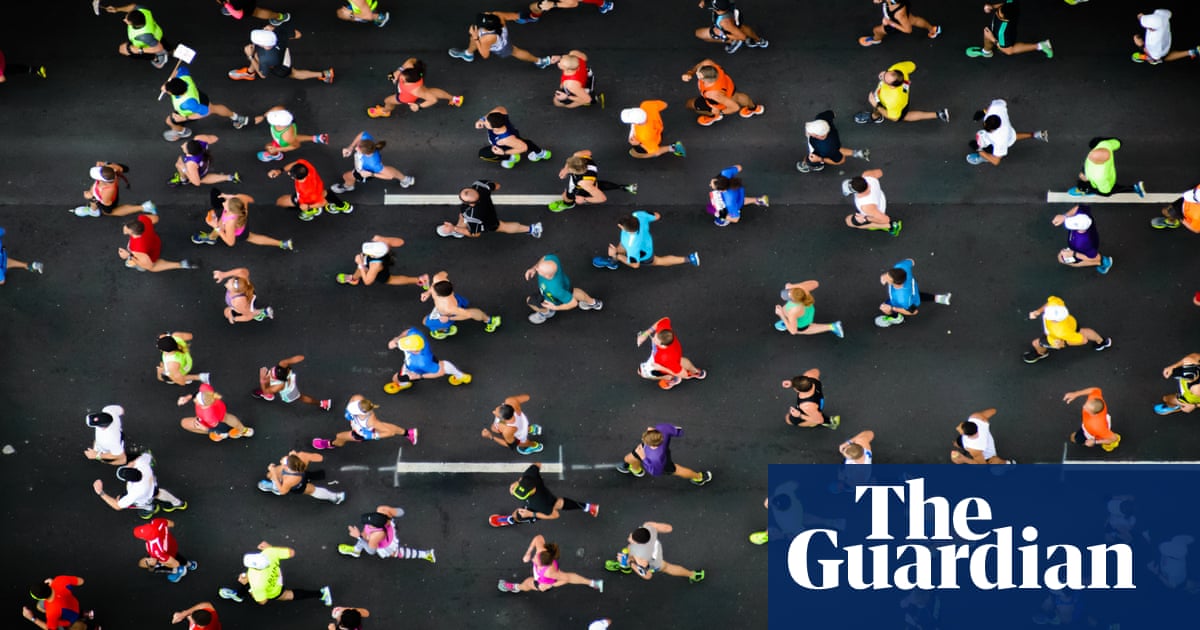It’s marathon season and, among the technical-fabric-clad army of runners toeing the start lines at the big city races, there’ll be thousands of mildly terrified first-timers. They’ll be ready to tackle the26 miles and 385 yards– and take a daunting step into the unknown. Or more like 50,000 steps.
I remember my first marathon in Paris, in 2009. It’s nervy; you’ve suffered your way through the odd 20-mile training run, but what lies beyond that remains a mystery. Will I hit the wall? Will my body cope? What if I pee myself? So many questions, so few guarantees. The only certainty: even if you’replanning to do some jeffing, at some point it’s going to hurt.
Adrift in that sea of uncertainty, our instinct to control kicks in. We turn to the one thing in our power: running kit. Cue endless hours of fussing and second-guessing yourself over your choice of race-day gear. What I call “kit pratting”.
From socks to sunglasses, it’s undoubtedly important to find what works for you and assemble a race-day suit of armour. But, as a novice, it’s easy to overcomplicate things and become the marathon incarnation of an end-of-world prepper, trying to be ready for all eventualities, envisaging Armageddon at mile 24.
I’m here to tell you to relax. It’s all going to be OK. This April in London was my 60th marathon and, since that first fretful plod around the streets of Paris, I’ve learned that simplicity is the way to go when it comes to marathon kit.
Less kit means fewer potential malfunctions. For example, a hydration vest offers the security of water on tap, but adds weight and increases your risk of chafing. There’s plenty of water on the course, so can you do without it?
You can see what else I recommend in myguide to running kit for marathon first-timers. If, though, I had to pick only a handful of mission-critical items,running shoes, running socks, undies and lube would top the list. This may sound more like a naughty weekend than a 42-kilometre slog through the urban sprawl, but hear me out.
For beginners, comfort trumps speed when it comes to shoes. Be honest with yourself: will those minimalcarbon race shoesreally be a better option than a reliable workhorse to cushion you through three to six hours on your feet?
You’ll also be thankful for a good pair of running socks that stay dry, don’t bunch or induce blisters. Use the ones you wore on your long training runs if they worked. After all, happy feet = happy runner.
We also need to talk about your soft bits. Nothing derails a race strategy like painful chafing. Your weapons against unwanted rub are twofold: a good pair of seamless undies, such as these excellentCXP Enduranceones, and agood sports bra. Plus, someserious lube. Vaseline works, but it can be messy. Whatever you choose, be liberal – really liberal. You’ll thank me.
Finally, don’t forget your safety pins and a bucket-load of self-belief. You’ve got this.
Women’s spring wardrobe essentials: 27 easy-to-wear pieces to see you through the season
The best running shoes for men and women to take you from trail to road to marathon, tried and tested by runners
‘Crunchy inside, flabby on the outside’: Rachel Roddy tests supermarket spaghetti
The best mascaras for longer, fuller and fluttery lashes: 10 favourites worn and rated by our beauty expert
Essential women’s underwear: the best knickers, bras and socks for every occasion
Whether it’s a trusty old teapot or a well-worn pair of shoes, it can be sad when one of your favourite things breaks. Before you throw it away, have you been in touch with the company that made it?Our readers have shared some surprising storieson the items brought back from the dead through a call or email (even more than 30 years after the original purchase).
Monica HorridgeDeputy editor, the Filter
Our on-again, off-again relationship with sunshine makes it tricky to get dressed at this time of year, but a decent raincoat can keep you safely dry without derailing your look. When Ellie Violet Bramley bought an anorak in her 30s, it changed her life, so she was the perfect person to put together our list ofthe most stylish women’s raincoats.
What’s your most hated cleaning job (you do clean your house, don’t you)? The loo? The oven? The windows? The stairs? Or trying to get rid of the dust that settles on top of books? And is there anything that makes these jobs easier? Let us know by emailing us atthefilter@theguardian.com.
